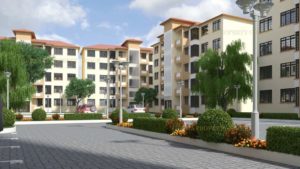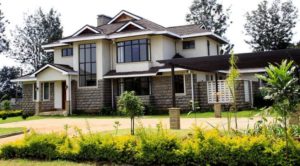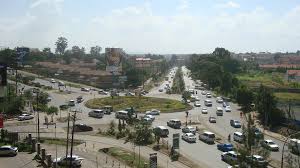The prices of land and city homes in Nairobi and towns around Kenya’s capital are now experiencing major increases due to increased demand from buyers who had reduced purchases as a result of the economic difficulties brought on by the still ongoing Coronavirus pandemic.

Data released by Real Estate company; HassConsult revealed that in the year leading up to March of 2022 the average price of an average house within Nairobi increased by 6.8 percent when compared to the 1.8 drop experienced during the same period in the previous year.
This is the fastest increase the sector has experienced since 2018 when its growth grew to 8.5 percent. It is more proof of the sector’s recovery from the economic struggles it faced as a result of the Coronavirus pandemic.
In Nairobi the prices for Land increased by 1.07 percent while said Land prices experienced an increase of 7.35 percent in areas like Juja and Kitengela when compared to a growth of 0.58 percent in the year leading to March of 2021.
The increase in prices for plots of land in areas around Nairobi is the fastest witnessed over the past five (5) years and reminiscent of the period in time when an increase in the demand for properties in Nairobi suburbs resulted in a number of coffee plantations giving way to more shopping centers and housing estates.

At the peak of the Coronavirus pandemic the Real Estate sector was one of the most affected sectors as would be home owners and land owners were severely affected by job losses, reduced income and spending costs and spending power, investors opting to hold on to their cash pending when the situation stabilized and Banks becoming even more cautious with spending.
In the decade leading up to 2015 the Real Estate sector was among the fastest growing sectors in Kenya even outperforming equities and government securities.
Read also: 60,000 Residential Houses Set To Be Built By Nairobi County
The Head of Development Consulting and Research at HassConsult; Sakina Hassanali revealed that, “Over the quarter, Thika, Juja, and Ruiru towns continued to sustain investor demand, which was reflected in land asking prices increasing by 6.3 percent, 4.6 percent, and 1.6 percent respectively.”
This occurrence is taking place at a time when Kenya’s economy has begun to bounce back with a growth pace that is the fastest it has been in eleven (11) due in part to the lifting of a number of Coronavirus restrictions.
The speedy growth also helped stimulate recovery in major sectors. Sadly, Agriculture is still facing challenges due to less than usual rainfall.

In Juja the price for an acre of Land increased by 17.5 percent from 14.8 million Kenyan Shillings to 17.4 million Kenyan Shillings. In Kiserian the price for an acre of Land increased by 16.6 percent from 8.06 million Kenyan Shillings in 2020, to 9.4 million Kenyan Shillings.
Land owners in Athi River increased their prices by 4.86 percent from 14.4 million Kenyan Shillings per acre in 2020 to 15.1 million Kenyan Shillings per acre. The price for an acre went up by 11.3 percent in Syokimau from 22.1 million Kenyan Shillings per acre to 24.6 million Kenyan Shillings.
In a majority of the suburbs the price for Land has continued to be almost unreasonably expensive. Said prices go as high as 389.9 million Kenyan Shillings per acre in Parklands and 409.4 million Kenyan Shillings per acre in Kilimani.
Read also: How To Make Passive Income In 2021 – Information Products and Rental Properties Investments
Land available for purchase in the upmarket suburbs are significantly limited with parcels of Land getting subdivided into half an acre going up in majority of the areas.
The increase in prices were lower in the suburbs with Muthaiga for instance, having the highest increase of 6.5 percent with an acre of Land going for 197.8 million Kenyan Shillings.

Lang’ata followed closely with a growth of 6.3 percent from 68.5 million Kenyan Shillings per acre. For Kitusuru, the price rose by 6.1 percent to 95.4 million Kenyan Shillings per acre.
Areas like Donholm, Loresho and Riverside experienced drops in prices of Land. Donholm had a 3.6 percent drop to 68.9 million Kenyan Shillings per acre, Loresho had a 2.0 percent drop to 86.1 million Kenyan Shillings per acre, and Riverside had a 2.3 percent drop to 330 million Kenyan Shillings per acre.
As at the time of writing this article Upper Hill is the most expensive area in Nairobi with an acre of land going for 499.9 million Kenyan Shillings. It is followed closely by Westlands where land is at 435.5 million Kenyan Shillings per acre and Kilimani where land is at 406 million Kenyan Shillings per acre.
The recovery of the Kenyan economy has also aided in the Real Estate making experiencing price gains as more and more businesses get back on their feet and individuals who had lost their jobs at the beginning of the still ongoing Coronavirus pandemic, get new jobs.
Read also: Kenya’s Middle Class Is Now Moving To More Affordable Homes
The economy bouncing back, has resulted in more and more investments into Real Estate. Developers have also been able to go ahead with the projects which they had previously put on hold due to the Coronavirus pandemic and pending when the Real Estate sector would bounce back.
Prices of homes in Nairobi’s satellite towns have remained moderate due in part to the fact that a significant number of individuals who live in said areas, prefer to build their own homes as opposed to purchasing.

According to HassConsult the home sale market has majorly been influenced by an increased demand for detached units. This is a particular area where the supply had experienced a not so subtle drop over the past 20 years.
Langata experienced the highest gain in average house price by 11.2 percent to 33.2 million Kenyan Shillings.
Loresho went up by 7.5 percent to 55.7 million Kenyan Shillings, while Spring Valley by 9.1 percent to 71.3 million Kenyan Shillings.
In Muthaiga and Runda the home priced reduced by 0.8 percent to 82.9 million Kenyan Shillings and by 2.5 percent to 93.3 million Kenyan Shillings respectively.
Other top factors in the gain in prices of homes and prices of land in Nairobi, have been infrastructural developments and constraints.
How informative was this article? Are there any other news topics, categories, or How To topics, that you would like us to write on? Feel free to reach out to Nextbit KE in the comment section.


